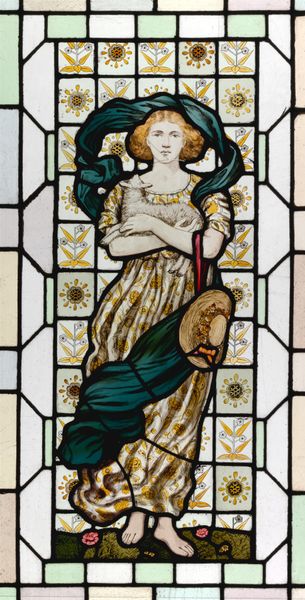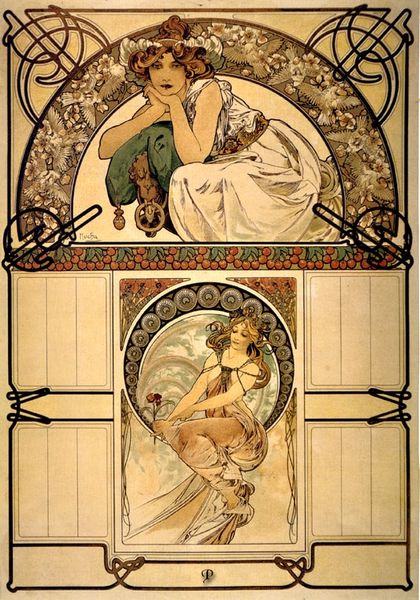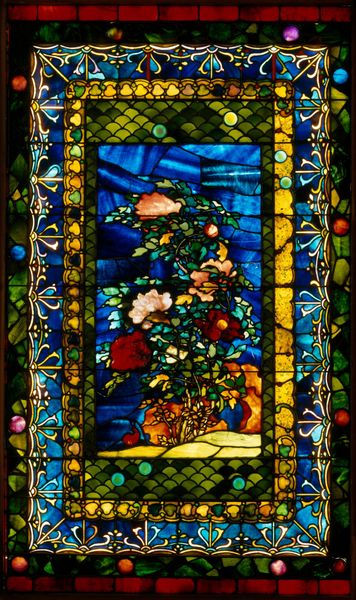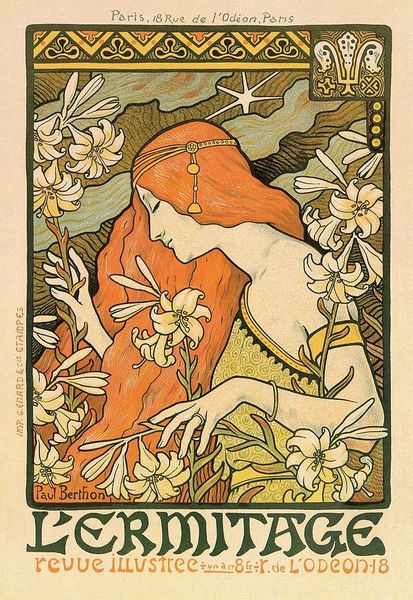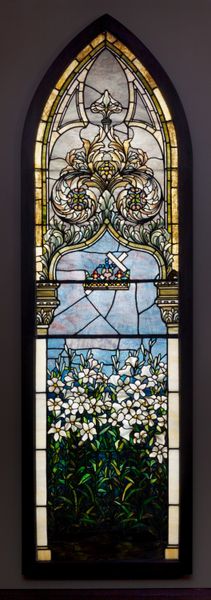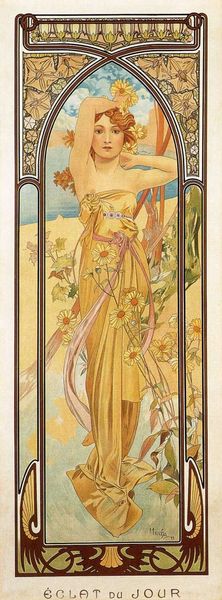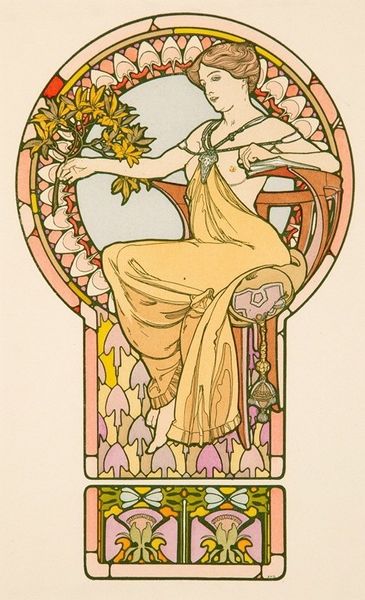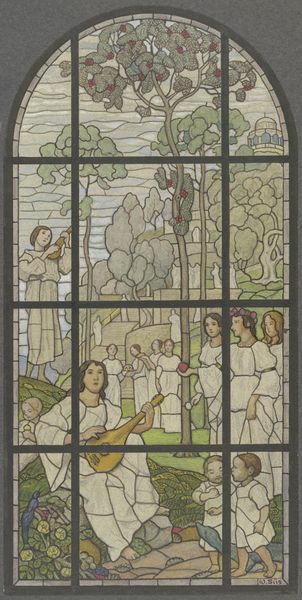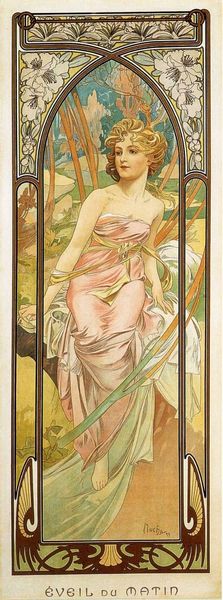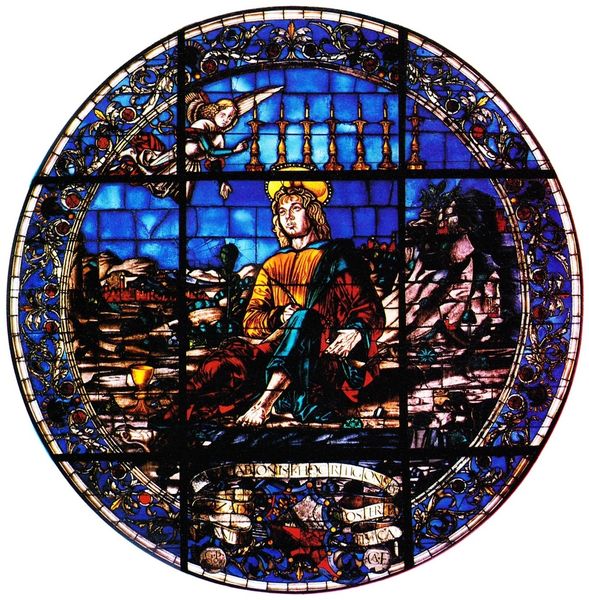
glass
#
art-nouveau
#
landscape
#
stain glass
#
figuration
#
glass
#
tile art
#
symbolism
Copyright: Public domain
Eugène Grasset created this stained glass work, titled "Spring," during the late 19th century, a period characterized by significant social changes and artistic exploration. Grasset, deeply entrenched in the Art Nouveau movement, sought to integrate art into everyday life. In "Spring", the artist uses the female figure as a symbol of nature, fertility, and renewal, reflecting prevalent cultural ideals which often confined women to symbolic roles. The woman, draped in classical robes, blends into her natural surroundings. While seemingly celebrating the beauty of spring, the work may also subtly reinforce traditional gender roles by associating women with passivity. The style, with its flowing lines and naturalistic motifs, creates a sense of harmony. Yet, beneath the surface lies a tension, an echo of the societal constraints placed upon women even amidst the era's artistic freedom. "Spring" invites us to consider the relationship between beauty, gender, and the societal narratives that shape our perceptions.
Comments
No comments
Be the first to comment and join the conversation on the ultimate creative platform.
